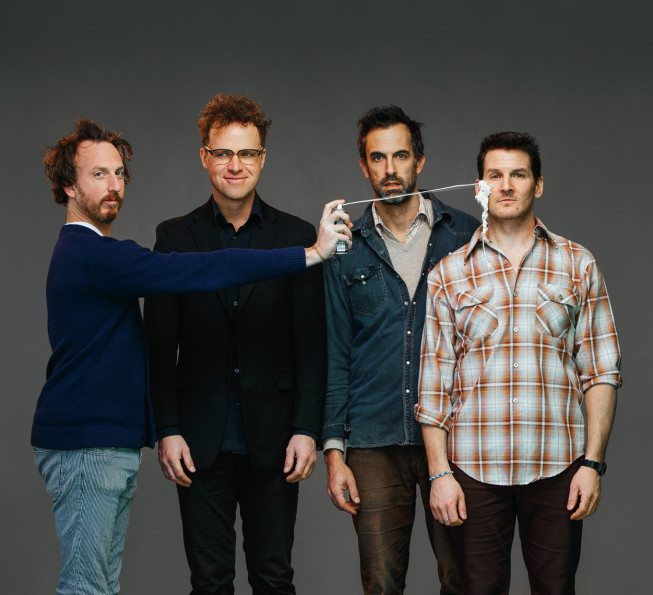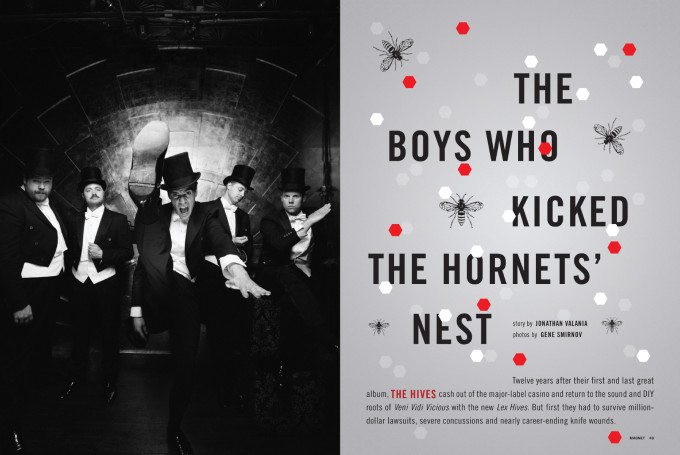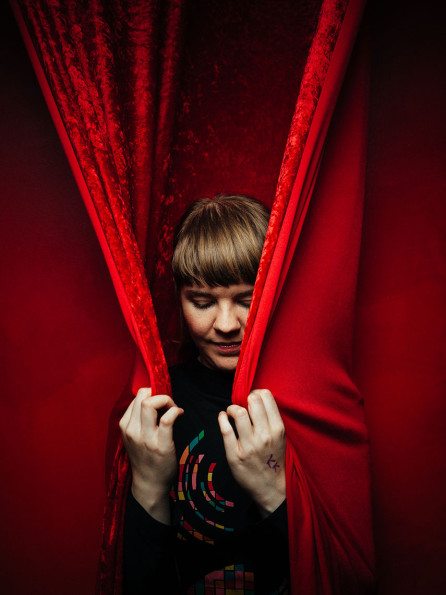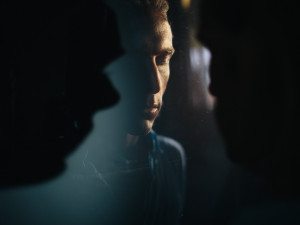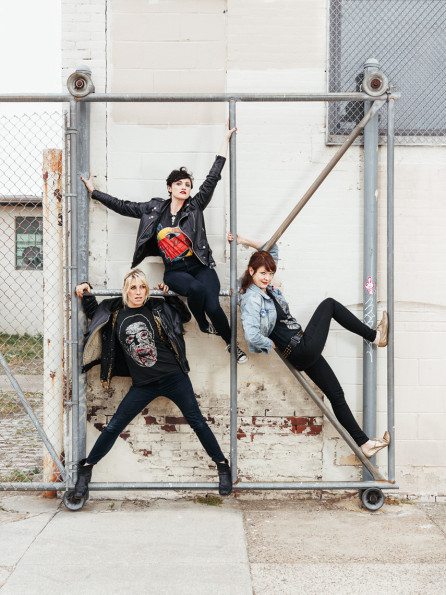All images by Gene Smirnov. Used with permission.
Photographer Gene Smirnov was born in Russia, lived in Siberia and on a Japanese sea. He studied economics and law near Moscow, but later found the arts and jumped through many hoops before discovering photography. When he messaged us about his portraits, we were quickly taken back by some of his music portraiture work.
Gene is constantly working on various projects and collaborating with creative people–as most creatives should. To balance his creative life he enjoys going to shows–and now he calls Philadelphia home.
What we’re most impressed by with Gene though is his creative style, lighting and the way that he tries to tell a story in a single image.
Phoblographer: Talk to us about how you first got into photography.
Gene: In college back in Russia I was studying economics and law before I could commit to something. I found myself very interested in natural and graphic arts. I would take art classes in the evening and when I wasn’t in class, I spent a lot of time in photoshop. I went to college again and later became a graphic designer. At that time my ideas and designs were lacking some immediacy, so photography quickly filled that void. My first real camera was Nikon FM10. I was constantly taking photos, for me it was a natural obsession. I found something that could be emotive and constructive at the same time.
Phoblographer: What made you want to photograph musicians?
Gene: I’m a big music nerd and I go to as many shows as I can. So I always wanted to capture musicians lives the way I saw them. But the first band I photographed was called SimplyNobody. My dear friend Joe, who is the singer of the band, and I had a design class together and he invited me to their show. As I remember, nobody actually showed up, just the band. It was a lucky night for me as I’ve never done this before. It took a very long time for me to transition from taking to making photos.
Phoblographer: Typical portrait sessions for musicians usually need to be fast. So how do you go about posing, explaining the idea and getting the shot in a short amount of time?
Gene: I do my research and try to understand what the band is all about, read the bio, etc. It helps to learn about their love and pain. When it’s a shorter shoot, I present all the locations and ideas right away so the subject is refreshed about what we’ve discussed prior. If we are early on location we can be thorough, but often you don’t have that luxury, so when I get to the spot, I do an initial scout, pick a couple of potential spots and prioritize them. I often do 2 setups right away and then we schedule things so while we transition to the second setup, the third one is being worked on. Sometimes it’s as simple as getting one light and going outside. Based on how many people are in the band, I have specific ideas that could work in different situations, indoor or outdoor. Most of the time I photograph a single artist or four piece. Posing comes in during the sketching process, so I generally have something ready to match the location, but we do improvise a lot based on the setting. I use tripod when I can, which helps me be more decisive and we are generally quicker to get the shot we are after. It really pays to be prepared, but also remembering to keep it simple.
Phoblographer: Where do you get your inspiration from when working with musicians and taking their portraits?
Gene: First of all, my friends and family, there are many strong personalities in my life and they are a true inspiration. I like to surround myself with people who are observant and question the world around them. I also try to find it outside of the photography world. I listen to a lot of different music, watch movies, countless documentaries, pore over design and art books. I like to get away from the computer, put on a record and reflect my ideas on paper. The photo books I mostly enjoy are narrative driven, so I get inspired by how they make me feel. I’m drawn to surrealism in movies and art. The best thinking for me happens when the sun is down.
Phoblographer: Talk to us about the gear that you use.
Gene: Currently I use Canon 5DIII with a full range of Canon portrait/event lenses. The 24-70 2.8 II gets most of the use along with 50L and 85mm. I had the Fuji x100s for awhile, took it with me as only digital camera on my west coast road trip and was really impressed with its quality, but later sold it and definitely miss it now. I also like using Mamiya RZ67, Mamiya C3 and other film cameras, mostly for personal portraits and landscapes. Lighting wise I really enjoy Profoto monoheads, which give me great consistency and the quality of light. I have a few D1 and B1 strobes. I find myself using B1 a lot since it’s really convenient. My top modifiers are 3′ and 5′ octa banks by Creative Light, 22″ white beauty dish by Kacey Enterprises and a Zoom reflector. I also find that a Canon speedlight can do some damage for immediate raw look. I think having the right equipment is very important, but there are many ways to take one photo.
Phoblographer: We always say that getting your lighting right is so super important. Lots of your images seem to use artificial lighting. How do you think that effective and creative lighting can make the difference with a musician?
Gene: I think lighting is a very flexible medium and it’s definitely a component of my style and voice. I think it’s effective in setting the tone and the mood of the shot. I generally base my lighting on the story, what I learn about the subject and what is interesting to me at the moment. I always liked moodier, quiter images, but my tastes have evolved to focus on a feeling and being present in time. Lighting helps intensify or change the subject’s presence, which can be very powerful in telling the story. I also like to be open to what everyone else thinks, so I generally show the progress on an ipad and we talk about ways to improve it. It makes a big difference to see the image on a bigger screen. Lighting can make it or break with different people, ages, etc, so knowing how to achieve the quality of light is very important.
Phoblographer: Where do your specific inspiration come from for the lighting that you do? It’s very stylized and specific.
Gene: I think my background in graphic design affected how I approached lighting. When I started shooting portraits I would do many setups, as many as my subject would allow me. I knew that I needed to get good at it and working with lighting was fascinating to me, so I practiced a lot. Just like a musician has to practice every day. I don’t think I was very organized with my ideas, I just wanted to see what each modifier does and try to incorporate it in my photo sessions. Similarly to how a designer would give their client multiple layouts, I would create different looks and wouldn’t stop until I found something I really liked. My lighting used to be much more stylized and I shed that along with my fish eye lens a long time ago.
Phoblographer: Many of your images are very environmental. Why do you choose this approach over the more cookie cutter verticals that we’ve all known?
Gene: I think I was always after a story, I just didn’t always know that. I photographed bands wherever they are, especially considering I didnt use lighting in the beginning. I was ready to shoot for days in any given setting and that helped me formulate my approach. An environment can provide a very solid real or fictional story about the person or can simply make a dull personality seem interesting. Later being in a studio setting I was pretty uncomfortable with a blank canvas as it didn’t excite me. That is part of why I’m drawn to being on location. Being in an environment allows you to dial in the degree of importance of it in the shot and that is an enormous opportunity.


